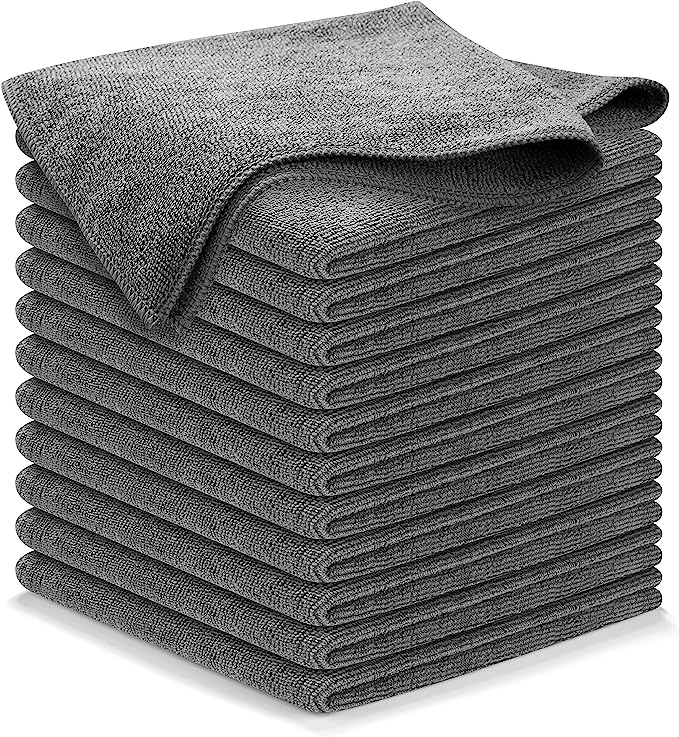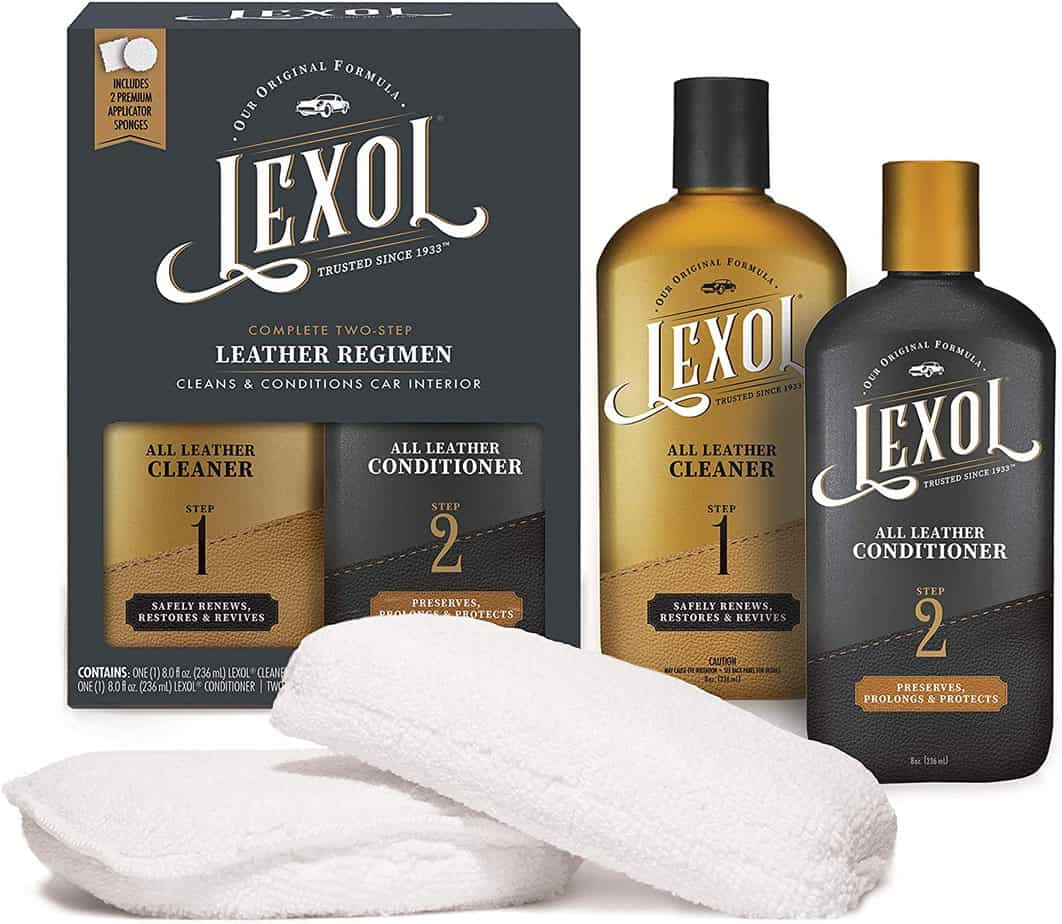Leather sofas are a great investment and can last for years if properly cared for.
Most homeowners don't realize that leather furniture needs to be regularly cleaned and maintained correctly to protect furniture in the long run.
Consider this leather couch protection guide as your manual for the next twenty years.
Follow these seven tips to help protect your new leather sofa.
1. Clean Your Leather Sofa Regularly
Cleaning your leather couch is one of the most essential parts of maintaining your furniture.
Vacuuming and dusting your sofa can help avoid the accumulation of dirt, pet hair, and dust that can lead to scratching of your leather.
Using a handheld vacuum with solid suction such as the Dyson V7 is an excellent way to keep the sofa dirt-free.
In addition to vacuuming, leather sofa cleaners can be used to help clean your leather furniture.
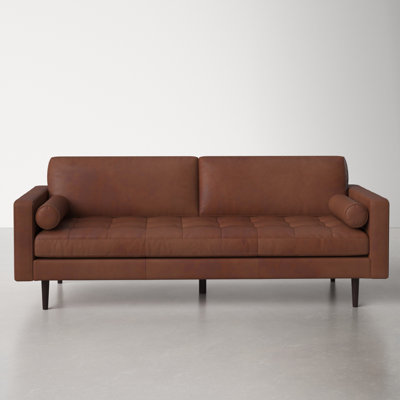
Arlo 88" Genuine Leather Sofa
The type of cleaning product used will vary based on your type of leather - so I recommend consulting your manufacturer's website or manual to see what kind of cleaning product they recommend.
How Often Should You Clean Leather Furniture?
Most manufacturers recommend that leather furniture be cleaned with a cleaning solution every three to six months.
I will note, however, that for any spot cleaning, I use a dry cloth or a damp microfiber towel (with a tiny bit of soap) to clean my leather sofa.
Quick Note - any of the aforementioned regular cleaning tips would also apply to faux leather (aka vegan leather).
2. Apply Conditioner To Your Leather Furniture
The average leather sofa consists of hides from six to seven cows, so consumers often forget that their living room furniture is that of multiple former animals!
Once those cowhides become your leather, they are no longer living creatures, and thus the hides no longer receive the oils necessary.
This is where conditioners or softeners come into play.
The objective is to apply natural oils to your leather furniture to keep it soft and supple without drying out.
Un-conditioned leathers (especially those left in direct sunlight) are more prone to fading and cracking. In addition, if you live in a dry climate, your leather sofa may require more conditioning.
What Is The Best Thing To Protect Leather Sofas With?
Your manufacturer might recommend a good leather conditioner.
You can always check out the leather care products at Leather Solutions Int'l, a recommended dealer for Hancock & Moore, one of the best leather sofa consumer brands.
On average, most leather professionals recommend conditioning your leather sofa at least once a year.
For me, I just set a date that I can remember every year and do it then.
3.Keep Your Leather Sofa Out Of Sunlight
Sun helps dry out leather furniture, leading to more fading and cracking.
One of the biggest tips I can provide is to get that leather sofa out of direct sunlight.
Once a leather couch has started to crack or fade, it gets tougher to repair the furniture.
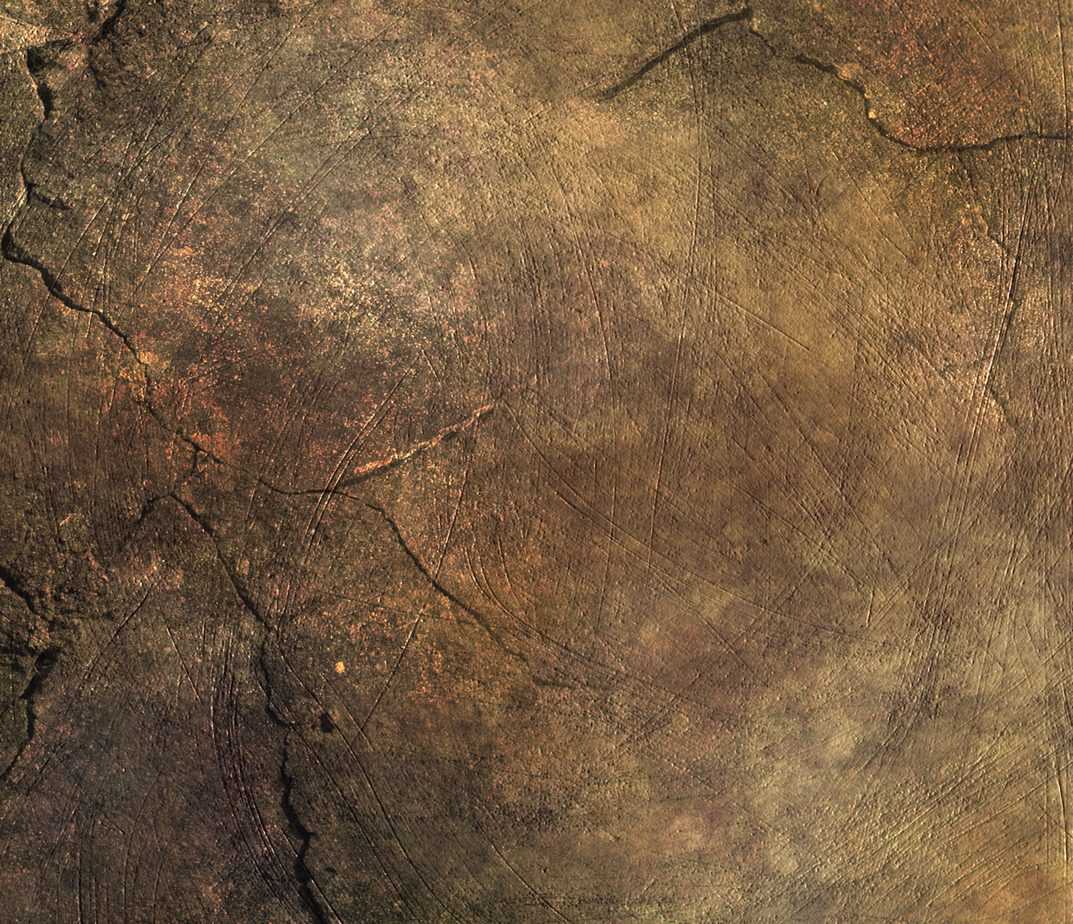
If your living room is filled with big windows, I would recommend adding some window coverings to help reduce the amount of sunlight during the daytime.
In addition, don't position your leather furniture near any significant heat sources, such as fireplaces or wood stoves.
4. Clean Up Leather Spills Immediately
You must act immediately when pets or humans make a mess of your leather sofa.
To tackle any water-based spills, use a microfiber cloth and blot up as much liquid as possible.

Our Favorite Microfiber Cloth
Things get a bit more complicated with any grease or ink-based stains.
Some say that rubbing alcohol, for example, is a good solution for ink stains; however, doing so will likely remove the color from your leather sofa.

I have more advice on removing any ink or grease stains here.
Note that there are certainly some differences in cleaning up spills, based on your type of leather, whether it is protected or aniline leather.
Given that aniline leather is more sensitive to staining than protected leather, it is crucial to attend to your leather surfaces as soon as possible.
5. Don't Use Any Abrasive Cleaners
This is an important one. I avoid any alcohol based products for stain removal on my leather furniture.
It's important to review your manufacturer's care manual to see what they recommend for any cleaning products.

It is also crucial that you use the right products that match up with your leather type.
For example, a protected leather couch will use a different type of leather cleaner than an unprotected, aniline leather sofa.
Lastly, suppose you are using a cleaning product your manufacturer does not recommend.
In that case, you risk voiding any potential warranties if the cleaner damages your leather for some reason.
What Is The Difference Between Leather Cleaner and Leather Conditioner?
Leather cleaner and leather conditioner, while both essential for leather care, serve distinct roles in the maintenance of leather products.
A leather cleaner is primarily designed to remove dirt, grime, stains, and oils from the surface of the leather. Over time, contaminants accumulate from regular use or due to environmental factors.
Cleaners contain mild solvents or surfactants tailored to lift and eliminate these impurities without harming the leather's natural structure or finish. Depending on the use and environment, leather products might need cleaning anywhere from monthly to a few times a year.
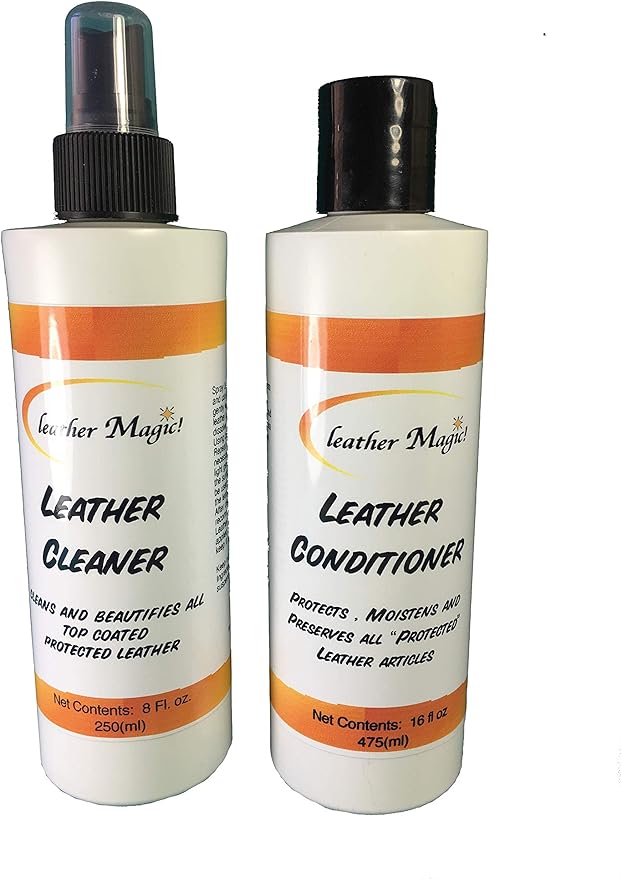
This leather magic product contains both cleaner and conditioner, but only use for top coated or protected leathers.
On the other hand, leather conditioner (also sometimes called a furniture polish) focuses on restoring moisture and nourishing the leather, preventing it from drying out or cracking. Since leather is a natural material, it can lose its inherent oils and moisture over time.
Conditioners, made up of natural or synthetic oils (and sometimes waxes), replenish these vital components, ensuring the leather remains soft and lustrous. Some conditioners may also offer UV protection to defend against sun damage.
The application of conditioners is generally less frequent than cleaners; it's usually done every few months to once a year, depending on the leather item's exposure to environmental factors.
6. Apply Leather Protectants As Recommended
Again, be sure to consult with your manufacturer's recommendations for your specific leather sofa.
You can use other after-market products, but it is all dependent on the type of leather furniture you have.
Whereas a leather cleaner and conditioner will clean and soften your leather furniture, a leather protector will add an additional layer of protection to help prevent cracking, peeling or discoloration.
Leather Protectant Serum
We really like this Leather Protectant Serum from Chemical Guys. It's not cheap, about $34 for a 16oz bottle, but is perfect to help prevent cracking, fading, and discoloration

There are many different manufacturers out there, and each furniture company recommends different ones.
For example, West Elm and Pottery Barn recommend a cleaner and leather protectant from Mohawk.
Hancock and Moore recommend products from Leather Magic and Leather Solutions as a part of their leather care regimen.
Note that a leather protector isn't an ABSOLUTE necessity, especially if you are careful about any spills and not leaving your sofa in direct sunlight.
7. Keep The Pets Off The Furniture
I know little Oreo loves to snuggle up with you at night, but unfortunately both dogs and cats can really mess up your leather sofa.

I will note that some owners are okay with their pets scratching up their unfinished leather couch (aka full aniline leather) as most of these pieces already have clear imperfections showing marks and scratches from the original hide.
How do I keep my cat off my leather couch?
Keeping your cat off your leather couch can be approached by offering enticing alternatives and using effective deterrence methods.
Firstly, providing your cat with cat trees, scratching posts, and interactive toys can divert their attention, while a comfortable cat bed or blanket near the couch can give them their own spot.

This not only keeps them occupied but also discourages interest in the couch.
Additionally, cats have aversions to certain textures and scents; tools like double-sided tape, aluminum foil, or citrus-scented sprays can deter them from the leather surface.
Some owners also find a brief spray of water from a squirt bottle effective, although care must be taken to ensure this doesn’t cause fear.
A firm, yet not loud, "No!" when they approach the couch can also help them understand boundaries.
If their nails are kept trimmed, it further reduces potential damage from any scratching.
Amazon does sell a pet furniture repellent spray that some readers have used with success; however, I would advise starting with training cats to get them used to living life OFF of your couch.
8. Use Throws Or Covers
The investment you make in your leather furniture is worth protecting.
With these seven leather care tips, you'll be able to lengthen the duration of your leather furniture and keep it looking new for years to come.
Have any other recommended leather cleaners, furniture care tips or other ideas for protecting leather furniture?
Let me know in the comments below!


